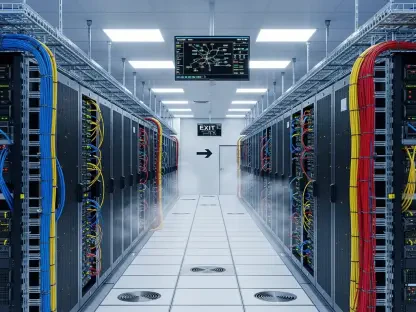The complexities associated with ERP (Enterprise Resource Planning) cloud migrations have long been a headache for businesses looking to modernize their operations. These projects are notoriously arduous due to data quality challenges, resource allocation issues, and intricate project management needs, requiring high-level coordination among numerous business functions. Klaus Fander, the CEO of acadon AG, explores an innovative solution to these problems by drawing an analogy with Lego building blocks. Fander proposes a modular approach to ERP migrations, suggesting that it can simplify and streamline the data transition process much like how Lego blocks make complex construction projects more manageable.ERP systems have historically been monolithic, involving laborious rewrites that disrupt operations each time a new version is released. Legacy systems like Navision epitomize this challenge, as updating them often necessitates extensive code alterations. However, innovations such as Microsoft Dynamics 365 Business Central have introduced a modular approach using ‘Events in AL,’ a programming concept that allows for code changes without tampering with the original application. This sort of modularity resembles the use of prefabricated elements in construction, making it easier to manage and implement complex systems. Such a paradigm shift could revolutionize the way businesses handle ERP cloud migrations.
The Challenges of ERP Cloud Migration
The process of migrating an ERP system to the cloud involves numerous hurdles, one of the most significant being data quality. The data that companies have accumulated over the years often comes with various inconsistencies and errors that need to be meticulously cleaned and mapped to fit the new system. These tasks are labor-intensive, requiring meticulous planning and rigorous testing. Besides, the allocation of resources for these projects can be a significant drain on a company’s operational capacity, making it essential to strategize and allocate personnel and other resources properly. Project management intricacies also add another layer of complexity, necessitating seamless coordination between various business functions to ensure a smooth transition.Moreover, traditional industries like timber companies, which acadon AG specializes in, face additional challenges. For these companies, preserving historical data is crucial because it provides insights into long-term trends and operational efficiencies. Therefore, any interruptions or data losses during the transition could have far-reaching consequences. It is this necessity for high-level coordination and the importance of maintaining data integrity that makes ERP migrations a daunting task. However, Fander’s proposal of a modular approach inspired by Lego offers a promising solution to these problems, making the process less intimidating and more manageable.
Exploring the Modular, Lego-Like Approach
The concept of a modular approach in ERP migrations takes inspiration from construction toys like Lego, where any complex structure can be built by assembling prefabricated elements. This analogy fits well with the use of ‘Events in AL’ in Microsoft Dynamics 365 Business Central, allowing for code modifications without altering the original application. This method ensures that customizations and updates can be managed with minimal disruption, unlike the extensive rewrites required by monolithic systems like Navision. By rotating their existing monolithic code by 90 degrees, acadon AG opted for a pragmatic approach, seamlessly integrating their existing customizations with the new cloud environment. This strategy, inspired by ex-Microsoft executive Marko Perisic, enables companies to leverage their existing systems while transitioning to the cloud.The benefits of this modular approach are multi-faceted. First and foremost, it reduces the risk of disruptions during the migration process, ensuring business continuity. By breaking down the complex task into smaller, more manageable components, companies can better plan, execute, and test each phase of the migration. This methodology also facilitates better resource allocation, allowing companies to tackle specific issues one at a time rather than dealing with the entire system overhaul at once. Additionally, the approach is user-friendly, promoting higher adoption rates among employees who might be otherwise resistant to change.
Benefits for Traditional Industries
ERP (Enterprise Resource Planning) cloud migrations have long troubled businesses aiming to modernize. These projects are notoriously challenging, plagued by issues with data quality, resource allocation, and complex project management. Coordinating among various business functions adds layers of difficulty. Klaus Fander, CEO of acadon AG, offers a novel solution, comparing the process to building with Lego blocks. Fander suggests a modular approach to ERP migrations, which could simplify the procedure much like Lego blocks ease complex construction projects.Traditionally, ERP systems were monolithic, requiring exhaustive rewrites that disrupted operations with each new version. Legacy systems like Navision highlight this issue, as their updates often demand extensive code changes. However, innovations like Microsoft Dynamics 365 Business Central introduce a modular strategy utilizing ‘Events in AL,’ a programming concept enabling code modifications without altering the original application. This modularity mirrors using prefabricated elements in construction, making system management and implementation more straightforward. This shift could dramatically change how businesses handle ERP cloud migrations, ushering in a new era of efficiency.









